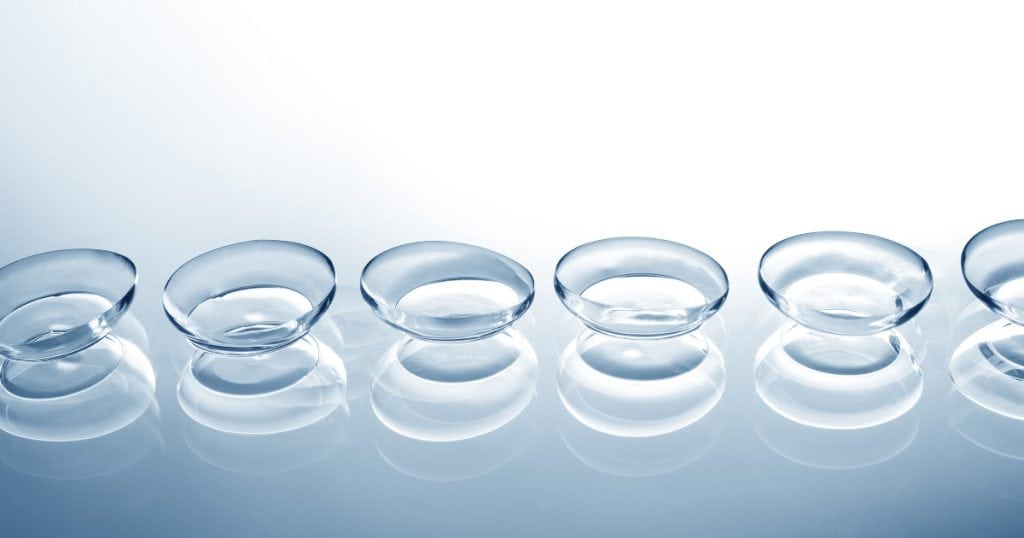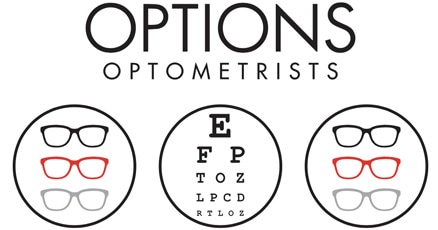Contact lenses are thin, curved pieces of specialised material placed directly on your eyes to correct vision. A wide variety of contact lenses are available, all with different materials, styles, and wear schedules to suit almost every lifestyle, prescription and eye condition. Understanding the various types of lenses is essential for safe, comfortable and effective use. This guide goes over the most common types of contact lenses available in Australia to help you choose the best lens for you.

Soft Contact Lenses
Soft contact lenses are the most popular type of optical lens. Their silicone hydrogel material is designed to make lenses highly breathable, allowing more oxygen to reach your cornea. Soft contact lenses are available in a range of different wear schedules to suit the wearer.
Daily Disposable Lenses
These single-use lenses are discarded after one day, making them the most hygienic and low-maintenance option. Unlike other lens types, you don’t have to clean or store them daily, as you throw the lens away at the end of the day and with a fresh, sterile pair the next morning. This makes them a great choice for new wearers or people with allergies.
Extended Wear Lenses
Some silicone hydrogel lenses can be worn continuously for an extended period of time (including while you sleep). Extended wear contact lenses can be worn for anywhere from one week up to 30 days, depending on the lens type. These lenses are often made from silicone hydrogel, which allows high oxygen flow to the eyes. The main advantage of an extended wear lens is that there’s less upkeep and cleaning involved.
Planned Replacement Lenses
Planned replacement refers to how often you swap out an old pair for a new one. Reusable soft lenses are worn for anywhere from two to four weeks. They’re taken out nightly and require cleaning before and after use. They’re a great option for regular weather and offer a balance of comfort and vision quality. However, a strict adherence to a lens cleaning routine is essential.
Learn More: How to Take Care of Contact Lenses
Rigid Gas Permeable (RGP) Lenses
Rigid Gas Permeable (RGP) lenses, also called hard contact lenses, are made from oxygen-permeable plastics that maintain their shape on the eye. This material allows oxygen to pass through more easily and provides sharper vision than soft lenses. They can be worn for longer periods and need to be replaced less often (up to two years). However, RGP lenses have an adaptation period as the eyes need to adjust to wearing them.
Special Contact Lenses
Multifocal Contact Lenses
Multifocal lenses feature multiple prescription zones for near, intermediate and distance vision. They are a great option for people with presbyopia (age-related farsightedness) and nearsightedness. Many people over 40 prefer to use multifocal lenses as a convenient alternative to reading glasses.
Hybrid Lenses
Hybrid lenses combine a hard RGP centre with a soft outer skirt for a more comfortable fit. They are particularly useful for people with irregular corneas or those who want the crisp vision of RGPs without the initial discomfort.
Scleral Contact Lenses
Scleral lenses are large, hard contact lenses. They fit over the white part of the eye (sclera) instead of your cornea. This design creates a tear-filled reservoir that’s ideal for people with dry eye disease and keratoconus. Although they require a more involved application and removal, their comfort and stability can be life-changing for those with complex eye conditions.
Toric Contact Lenses
Toric contact lenses are specifically for treating astigmatism, a common refractive error. Astigmatism is an irregular curvature of the eyeball. When light enters the eye, it doesn’t focus onto a single point on the retina as it should. Instead, the light focuses at multiple points, resulting in blurry vision at both near and far distances. Toric contact lenses correct this uneven corneal curvature by having two powers in specific meridians. They come in soft, RGP, and hybrid forms and require precise fitting to prevent rotation while in the eye.
Orthokeratology (Ortho-K) Lenses
Orthokeratology lenses are worn overnight to gently reshape the cornea. They temporarily correct myopia (short-sightedness) so you can see clearly during the day without lenses or glasses. Ortho-k lenses are particularly popular among children and teenagers, as they may slow down the progression of myopia.
Choosing the Right Contact Lens for You
The best contact lens is different you each person. It depends on lifestyle, vision needs and eye health. Contact lenses are not one-size-fits-all. A comprehensive eye test from an optometrist is required to decide your lens prescription needs. A proper fitting reduces the risks of irritation, infection, or complications in the long term. With the right fit, proper care and regular check-ups, contact lenses can provide clear, comfortable vision without the need for glasses.
